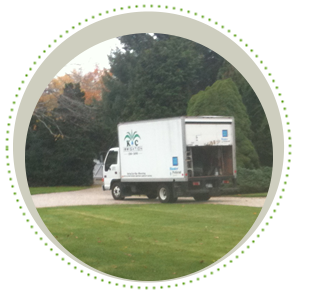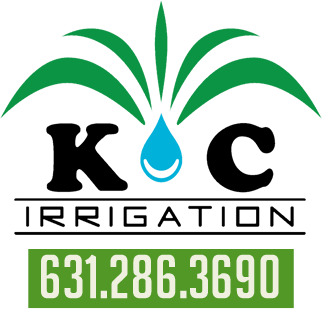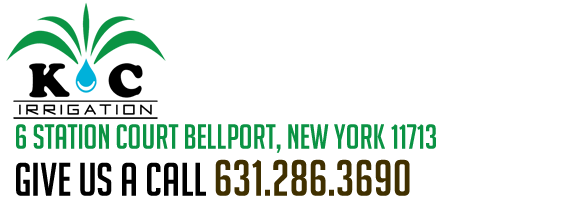
Turf Grasses in Northern Climates
Read Article
A Perennial Rye will start out as a lighter bright green then eventually darken. Tall Fescues have a dark green color, even in warm conditions, such as summer. Even though these grasses are meant for northern climates, they will tolerate the warmer weather through out the summer months. Fescues, Kentucky Blue Grass, and Perennial Rye’s thrive when soil temperature is roughly around 60 to 65 degrees, ex. ( Spring and Fall). With the help of an Irrigation System, these grasses will thrive through the warmer summer temperatures.
Bent-grasses are seen on a many lawns and are a nuisance to maintain. Bent-grass commonly seen on Golf Courses have ground’s keepers to support the high level of maintenance that bent grass needs. This type of grass is a no no for home use, unless you have a golf green in one area of the yard. If you do not plan to keep your lawn cut at 1”; cutting every other day, and using excessive amounts of irrigation in the warmer months known as syringe watering. I would recommend renovating the lawn. Otherwise, it will be an ongoing issue with this type of turf spreading and having a brownish tint in warmer months. The bottom line is, creeping bent grass does not tolerate dry, hot weather.
To maintain that perfect lawn can be challenging. This article helps you to understand the different types of grasses you may have in your lawn. Watering with a quality Sprinkler System is our speciality. Call us at K&C Irrigation to set up an appointment with us to insure that your lawn is healthy and green. 631-286-3690
Read Article
Acheiving the Perfect Lawn
Read More
Here are a few steps to help you achieve a Green and Healthy lawn.
One of the most important steps is having the lawn cut at the right height through out the seasons of the year. Grasses thrive when they are cut at lengths of 2” to 3”, generally this is a good height for the Spring and Fall months. As warmer weather approaches blades on the mower must be set higher. Why? The length of the grass is the essential part that absorbs the sunlight and then changes it to food. If the lawn is cut too low in the summer months this will stress out the turf.
Homeowners or professional lawn care companies should try and not to remove more than 1/3 of grass in any one mowing. As turf tends to grow very fast in the Spring and early Fall, mowing should be done more often. **note (Kirk this paragraph ‘t’ make sense to me)
Sharp Blades are a must! A blade that is dull will tear the grass resulting in a damaged looking lawn.
How will you know?
Whether it is yourself or your professional lawn care company take a look at a blade of grass a couple of days after it has been cut. If you see a uneven brown line across the tip of the grass, your lawn is being cut with dull blades. A dull mower blade will damage the grass and make it more susceptible to disease.
Over-Fertilizing can damage your lawn.
Just keep in mind that applying more of something will not help or improve your lawn. If you over Fertilize this could destroy the microbes in the soil causing the grass not to grow. A professional way to care for your grass is to take a test of your soil conditions before applying any substance to your lawn. It is always best to consult a professional that is fully Licensed and understands applications to make a lawn thrive.
Watering
Over watering or drought situations will damage your lawn. Most lawns will need 1” to 1.5” of water per week. This will provide moisture to a depth of 4” to 6”. Rain sensors such as the Solar Sync by Hunter, and Irrigation time clocks monitor how much water is applied to a landscape. Your Irrigation specialist is a trained professional in keeping your turf healthy and green.
Preventing problems to turf takes expertise and monitoring. A good team of professionals, including irrigation, pest & disease control and landscape maintenance will provide the necessary services to keep your lawn green and healthy. K & C Irrigation has a team of experts with many years of experience that can provide your lawn with professional care. Give us a call at 631-286-3690 and our secretary, Donna will be happy to schedule an appointment or leave a message and Kirk Kulbokas owner of K & C Irrigation will promptly respond to your request.
Nuisance Weeds
Read More
Crab Grass
Crab Grass is one of the most bothersome type of weeds for a customer’s lawn. This invasive weed tends to appear during the mid summer months. It germinates in turf that has been diseased or thinned by drought stress. Crab grass spreads through little seeds that remain in the soil for many years, ready to germinate when the opportunity arrises. Lawns that are healthy and thick will prevent crab grass from creeping through to a certain point. To keep crab grass under control it should be continually treated.
Dandelions
This weed is seen in many lawns and continues to be a persistent problem. This weed is spread through the head of the Dandelion. There are thousands of seeds in the head and all it takes is one windy day to spread them. We are told from our lawn care professional that it should be treated during its active growing cycle with a broadleaf weed control. To prevent this invasive weed is to keep your turf as healthy and thick as possible.
Clover
spreads through germinating seeds and existing clover weeds that are within the turf. This weed grows best in soil that is damp or moist. Clover is a broadleaf weed that spreads aggressively through turf and can be treated by a lawn care professional.
Spurge
Spurge is also an annual weed that thrives as warmer weather approaches. This weed can spread rapidly and germinates in stressed turf areas. Lawn care professionals believe that this weed can also be treated with a broadleaf weed control.
Irrigation Products Reviews
Read More
Newer drip irrigation has proved to maximize water efficiency. The older style (porous) drip hose tends to deteriorate over time. Netafim, a maker of drip irrigation is the product that we choose to use for it’s efficiency. This product has become popular in bed locations by distributing water right to the source of the root and keeping funguses off plant foliage. Water is not wasted, and irrigation contractors have been using this product to deep soak large trees and irrigate smaller plant material such as shrubs or perennials.
Spray heads release a large volume of water in a relatively short amount of time. These are most commonly used in tight areas for both turf and bed applications.
Rotors apply water uniformly and are generally used to irrigate larger areas. It is crucial to space your rotors at the correct distance, so over or under watering does not occur. It is important to know and understand irrigation charts to calculate gallons per minute (gpm), pounds per square inch (psi), and precipitation rates at each rotor or spray to be able to distribute water across a landscape.
If Spray or rotors are needed on a slope, different watering requirements are necessary. The Hunter HCV may be a good idea to install. This product is used for changes in elevation. It will stop run off as the system shuts down. Changing the program on your irrigation controller for several start times will also help water absorb into the soil and stop wasteful run-off.
A proerly maintained irrigation systems can last for many years. At K & C Irrigation we carry a wide inventory of parts on our trucks and can repair problems right away without unnecessary trips to the supplier for parts. We look through an irrigation system to fix whatever problem may exist. Most importantly, we will be able to give you recommendations to make your irrigation system more eco- friendly. As your landscape matures over the years, it’s watering needs change. Plant material becomes established and rotors, sprays, or drip irrigation, may need to be moved. Most importantly, we will be able to give you recommendations to make your irrigation system more eco- friendly. We are professionals that will help you to keep your landscape healthy and ever green.

















